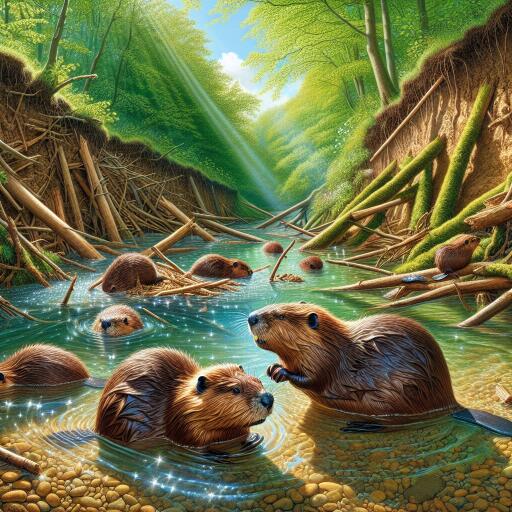
Beavers Reintroduced to South Downs Stream as Part of Biodiversity Project
Europe’s largest rodent, renowned for its role as an “ecosystem engineer” due to its exceptional capacity to enhance biodiversity, once roamed extensively across the UK. Unfortunately, these creatures were hunted to extinction approximately 400 years ago. However, a recent initiative has successfully reintroduced these fascinating animals to their natural habitat.
This initiative is spearheaded by Meonside Farm in collaboration with the University of Southampton and the National Park Authority. Together, they have reinstated beavers to a chalk stream located near Petersfield.
The Beaver Trust played a crucial role in relocating the duo from Scotland to a site spanning two hectares in the South Downs. Here, scientists will carefully observe the ecological and geographical transformations over the coming years.
The reintroduced beavers arrived at their new home in December and are adapting well. They are continuously monitored using wildlife cameras to track their progress in the area.
Will Atkinson, a farmer in charge of the reintroduction project, believes this initiative serves as a prime example of how landowners and farmers, while diligently working to produce the nation’s food, can also contribute to the recovery of species and the protection of crucial watercourses.
The School of Geography and Environmental Science at the University of Southampton is conducting extensive research on how the beavers’ presence impacts the habitat, ecology, and hydrology over time. As the beavers interact with the river and floodplain, changes are expected to unfold in these environments.
To accurately depict all forms of life in the area, researchers will collect and analyze “Environmental DNA” or eDNA. Utilizing advanced DNA sequencing technology, they can construct a comprehensive profile of every species residing within the habitat through merely sampling water or soil.
This study aims to provide valuable insights into other beaver reintroduction programs throughout Europe and enhance understanding of how biodiversity can be increased through such initiatives.
Professor David Sear, who leads the research effort, expressed enthusiasm regarding the university’s involvement. “We are thoroughly excited about understanding the pivotal role beavers once played in the evolution of our rivers,” he commented. By studying these animals, researchers hope to uncover how beavers transform chalk streams, subsequently sharing this knowledge with both restoration practitioners and landowners.
Additionally, the National Park’s Western Ranger team has erected fencing to form a perimeter enclosure around the site. This enclosure features an old duck pond and various vegetation types, creating an accommodating environment for the beavers.
Jan Knowlson, who serves as the biodiversity officer for the National Park, shared, “Beavers are extraordinary creatures that were once integral to British wildlife. It’s wonderful to witness a family establish their home in the South Downs National Park, where enhancing biodiversity is of utmost importance.”
This remarkable project not only aims to bring beavers back to their native land but also serves as a critical study to spotlight how essential these animals are in preserving and boosting biodiversity, creating sustainable natural ecosystems.





Leave a Reply